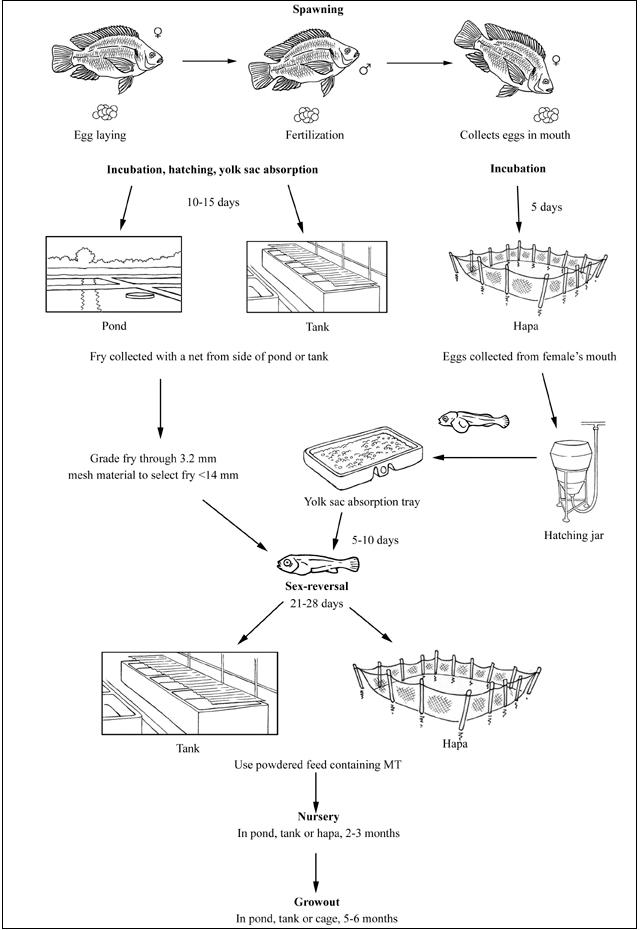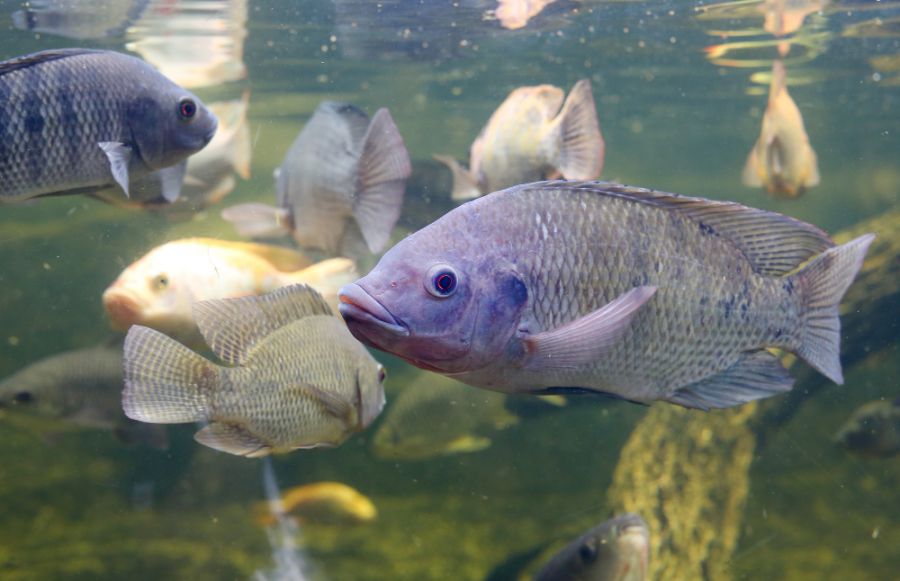
Nile tilapia (Oreochromis niloticus) is a remarkable fish, not just for its delicious taste, but also for its adaptability and ease of breeding in aquaculture. In this comprehensive guide, we will delve into the captivating world of Nile tilapia breeding, exploring its significance in the industry and the intricate steps involved in producing and raising healthy, thriving fish.
Why Nile Tilapia?
Farming Nile tilapia is ideal for aquaculture business in East Africa due to its high demand on market. It is considered to be among the healthiest sources of protein. Choline, niacin, vitamin B12, vitamin D, selenium, and phosphorus are just a few of the vitamins and minerals that are abundant in tilapia. Omega-3 fatty acids, which are excellent fats your body needs to function, are also abundant in it.
Also from a farming perspective Tilapia is often a logical choice; it’s a champion of adaptability and resilience. It can grow well in diverse environments, from brackish water conditions to freshwater ponds or cage systems. The feeding behavior of Nile tilapia makes them cost-effective to feed, contributing significantly to global food security. This is due to their ability to efficiently utilize feed and their optimal feeding frequency.
Broodstock management
1. Choosing the best parents
Broodstock management is a crucial aspect of Nile tilapia production, as it involves selecting the best parents to ensure improved performance and production of high-quality offspring in the next generation. Several factors are considered when choosing suitable broodstock, they should be healthy, disease-free adults, between 150-300 grams for females, and 200-500 grams for males, exhibiting rapid growth and exhibiting desirable traits like fast breeding and high offspring survival. You want to look for fish with smooth, intact scales, active swimming behavior, and clear eyes. Avoid parents with deformities, signs of disease, or sluggishness.
Sexual differences between males and females
| Males | Females | |
| Genital papilla | One opening (urinary pore of the ureter) | Two openings (separate oviduct for eggs and urinary pore) |
| Growth rate | Faster | Slower |
| Coloration during breeding period | Have vibrant coloration (bright pinkish-red color on the head, fins and anterior parts, clear milky-whitish on abdomen) | Darker color with brownish-blackish tinge, especially over head and dorsal region |
| Body size | Larger and longer | Smaller |
| Body shape | More elongated and slender | Wider body |
| Behavior | Males tend to dig nests and defend them | Carry eggs in their mouths after fertilization, until they hatch |
Seed production and management
1. Understanding Tilapia seed production cycle
2. Spawning and seed production
In the natural habitat, environmental factors like temperature and sunlight play a crucial role in the spawning of fish. Nile Tilapia reaches sexual maturity at 4-6 months depending on temperature. Reproduction occurs only when temperatures are over 20°C. Females incubate eggs inside their mouths (approximately for a week) where larvae hatch and remain until the vitellus (yolk sac) is reabsorbed. Nile Tilapia are asynchronous breeders. Hormones are therefore not used to induce spawning, which occurs throughout the year in the tropics and during the warm season in the subtropics. This means that, if there is no cold period, during which spawning is suppressed, the female may spawn continuously. Understanding these conditions is key for successful breeding and ensuring a steady supply of healthy fry in a hatchery.
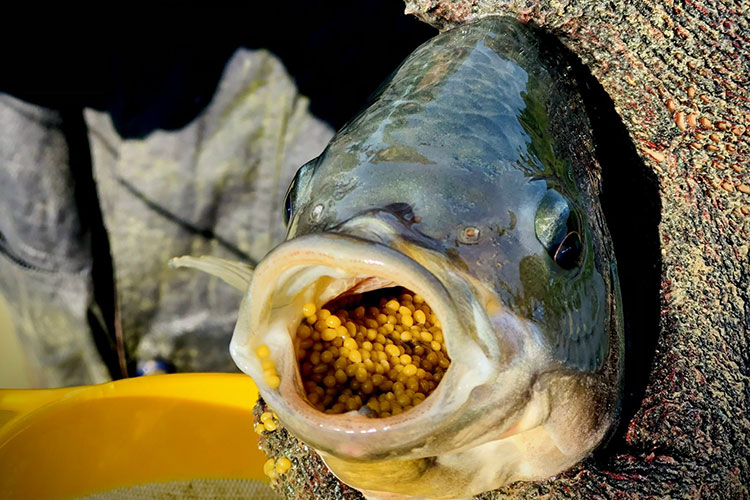
Female brood tilapia with fertilized eggs in the mouth
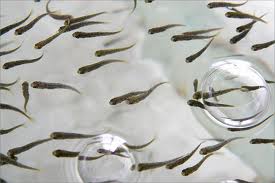
Tilapia fry swimming in the larvae tank
The quantity of eggs produced is in direct correlation with the female’s body weight. A female weighing 100 g can yield approximately 100 eggs per spawn, whereas a female within the weight range of 500-1,000 g has the potential to produce between 1,000 to 1,500 eggs. Meanwhile, the male stays within its designated territory, safeguarding the nest, and possesses the capability to fertilize eggs from multiple successive females.
Breeding of seed is done in ponds, hapas or tanks. This is commonly done at a stocking rate of 3 females to 1 male, 3:1, and a stocking density of 0.2 to 0.7 Kg/m2 depending on the type and size of the breeding culture unit. During breeding, broodstock are fed on high-quality feed at a feeding rate of 2-1 % of the body weight daily. The collection of fry can begin after 21 days into the initial stocking. The swim-up fry congregate at the outer edge of the pond or tank, and they can be collected using fine-mesh nets. In commercial Tilapia hatcheries, fry are immediately subjected to sex reversal after fry harvest.
3. Sex reversal
Due to the greatly desired characteristics of male tilapia like fast growth rate, fry are sex reversed in order to establish a uniform population of male monosexed fish. Since males grow faster than females, mixed sex culture may result in large size variation during harvest. Also, the presence of female tilapia results in uncontrolled reproduction, excessive production of fingerlings, high competition for food, and stunting of the original stock. This potentially prevents them from reaching a marketable size. Therefore it is necessary to reverse the sex of female fry for better results.
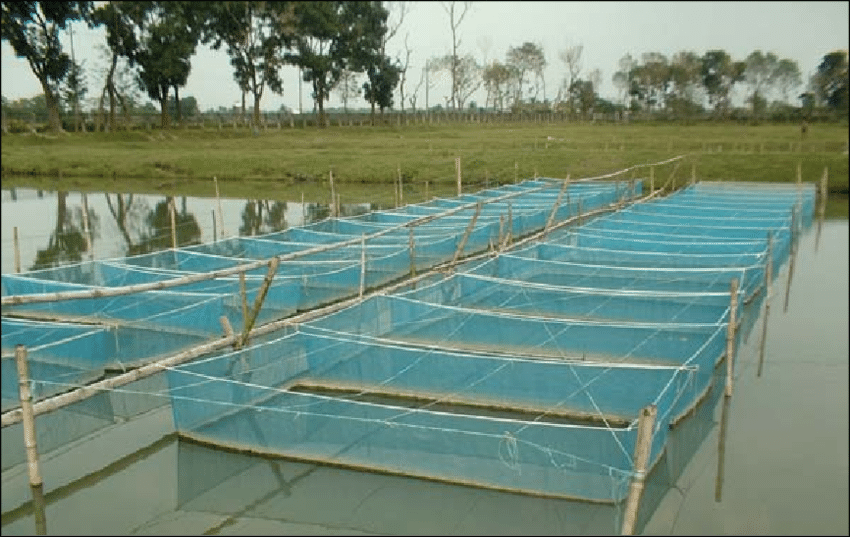
Sex reversal in hapas
Sex reversal is possible since fish sexually differentiate for several days after yolk sac absorption. When female tilapia are fed on a male sex hormone (17α-methyltestosterone, MT) in their diet, they undergo development as males phenotypically. Therefore the male sex hormone is mixed with powdered fish feed (> 40 % CP) by dissolving it in 95-100 % ethanol. This mixture is then air dried and kept under dark, dry conditions in a store.
The fry/larvae are then continually fed at a rate of 30-20 % of their body weight which is gradually reduced to 12-10 % by the end of the sex reversal period that lasts for 21-28 days. Feeding should be done at a frequency of 6-8 times per day.
Nursery phase
After sex reversal, fry are then transferred to the nursery section to facilitate growth to an advanced stage that can efficiently survive under grow-out conditions. Before stocking in the nursery tanks/ponds, the culture units must be thoroughly cleaned and disinfected to ensure absence of predacious organisms and disease-causing agents. The ponds/tanks are then filled with good quality water and subsequently stocked with a monosex population of fingerlings. These fingerlings should be fed on good quality feed for a period of about 6 weeks before stocking them in the grow-out ponds/cages at average body weight of about 10 g for production. As fingerlings transition to the grow-out phase, they require larger spaces and adjustments in feed types. To ensure that fingerlings continue to grow fast and healthy to harvest size, they should be closely monitored and examined regularly.
Sustainability and future trends
The future of Nile tilapia breeding lies in achieving a harmonious balance between growth, health and sustainability. Selective breeding is a promising approach to enhance the breeding of Nile tilapia. This method can improve disease resistance and ensure faster growth rates, leading to increased productivity. Additionally, integrating tilapia culture with other agricultural practices in integrated farming systems can optimize resource utilization and reduce waste. It’s important to note that responsible production practices are essential to minimize the impact on our precious ecosystems. By prioritizing environmental considerations, we can ensure sustainable and ethical production practices that benefit both the environment and the community.
Has this blog offered you valuable insights on how to properly manage Tilapia Broodstock and hatchery operations in the booming aquaculture industry of East Africa? Let us know in the comments!
Should you seek further support or have questions, don’t hesitate to reach out to the Aquaculture Support Center for expert guidance. Let’s work together to grow this industry and sustainably feed the world.

